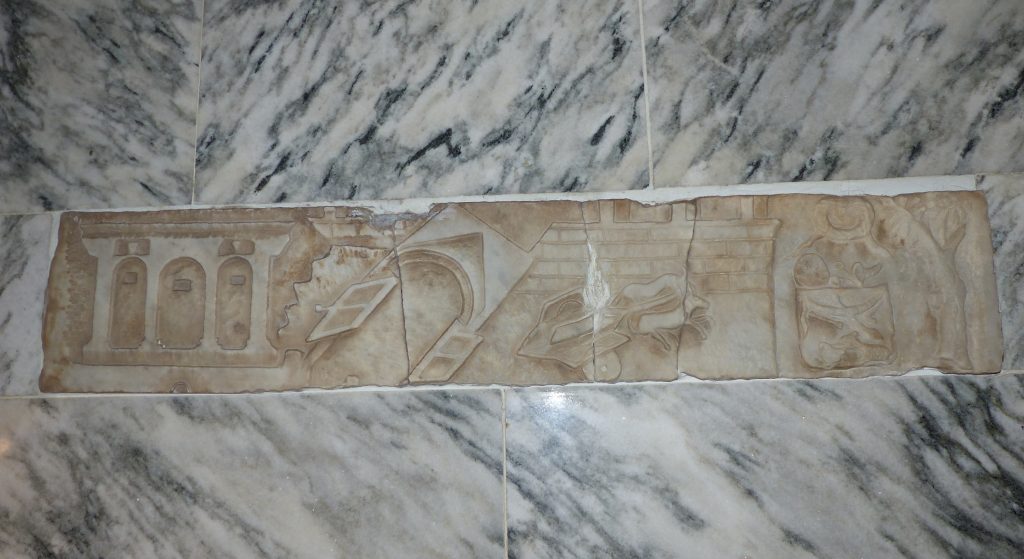Tribute to Inside Looking Out - For the male artists along my way
2008 - Film & Video (Film & Video)
Wong Wai Yin
In this work the artist stages a humorously violent “intervention” against male-dominated cultures of art production in present-day China. For this video, Wong accompanied six male friends from art school to a group show of their work titled “Inside Looking Out” at Osage Gallery in Beijing. Throughout her visit, she was rarely acknowledged for her own creative accomplishments and was more frequently introduced as an artist’s girlfriend, and often without name. Although inspired by Conceptual art of the 1960s, Wong had never considered her prior work to be in conversation with Feminist Art. Her encounters in Beijing, however, compelled her to address her experience of gendered erasure and discrimination. In her black and white video, Wong stands off camera with a metal stool in hand. As the six artists from the “Inside Looking Out” show appear on screen, Wong hits each one on the head with the stool, provoking winces and laughs from her “victims.” Wong makes it clear that the artists are willing participants, and their laughter and over exaggerated expressions of pain signal that they are “in” on the joke. But Wong’s slapstick violence here is for more than parodic effect, and in staging these violent interventions in miniature, she signals the need for a decisive rupture against art world patriarchies that foreclose opportunities for female and non-binary artists.
Wong Wai Yin is an interdisciplinary artist who experiments with a variety of media ranging from painting, sculpture, collage, performance, video, installations and photography. Taking fragments of her daily life as a point of departure, Wong has transformed these familiar and seemingly humdrum activities into something wanton, witty, and whimsical. By treating the ordinary work with unsurprising indifference, yet interwoven with humour that is playful, irresponsible, and capricious, her work blurs the presumed boundaries between gallery-exhibited art and daily life. Her performance or action-based video works in particular are reminiscent of the conceptual art of the 1960s that questioned the process of making art with elements of chance. Wong’s early artistic training in Hong Kong was focused on traditional Western European studio practices and mediums but she has since been trying to unlearn these conventional means of art making. She has since shifted to a performative and conceptual approach in her work that often stems from autobiographical experiences, episodic memories and playful interventions with art history.
Colors:
Related works featuring themes of: » Collage, » Collective History, » Consumerism, » Contemporary Conceptualism
» see more

© » KADIST
Bjorn Copeland
2009Sign #1 , Sign #2 , Sign #3 were included in “Found Object Assembly”, Copeland’s 2009 solo show at Jack Hanley Gallery, San Francisco...

© » KADIST
Gareth Moore
2006Uncertain Pilgrimage is an ongoing project in which Moore draws from his unplanned travels in recent years...

© » KADIST
Hank Willis Thomas
2013The image is borrowed from protests during Civil Rights where African Americans in the south would carry signs with the same message to assert their rights against segregation and racism...
Other related works, blended automatically
» see more

© » KADIST
Wong Wai Yin
2021Drawn from the widely circulated images of protests around the world in support of women rights and racial equality, the phrase I can’t believe we are still protesting is both the title of Wong Wai Yin’s photographic series and a reference to similar messages seen on protest signages...

© » KADIST
Bjorn Copeland
2009Sign #1 , Sign #2 , Sign #3 were included in “Found Object Assembly”, Copeland’s 2009 solo show at Jack Hanley Gallery, San Francisco...
Related works sharing similar palette
» see more

© » DIANE PERNET
Dutch Emerging: Ruben Janssen X GRA Fashion Bachelor 2023 – A Shaded View on Fashion From the back to the middle and around again — Ria’s wedding dress, Alan’s patterns and John’s model: ‘My project is an investigation into evolution, explored through prisms of biology, computation and a poetic personal narrative, shifting between timescales on an evolutionary timeline...

© » KADIST
Cally Spooner
2016The installation Self Tracking (the five stages of grief) was realized from a performance that is to be re-activated...
Other works by: » Wong Wai Yin
» see more

© » KADIST
Wong Wai Yin
2021Drawn from the widely circulated images of protests around the world in support of women rights and racial equality, the phrase I can’t believe we are still protesting is both the title of Wong Wai Yin’s photographic series and a reference to similar messages seen on protest signages...

© » KADIST
Wong Wai Yin
2021Drawn from the widely circulated images of protests around the world in support of women rights and racial equality, the phrase I can’t believe we are still protesting is both the title of Wong Wai Yin’s photographic series and a reference to similar messages seen on protest signages...

© » KADIST
Wong Wai Yin
2021Drawn from the widely circulated images of protests around the world in support of women rights and racial equality, the phrase I can’t believe we are still protesting is both the title of Wong Wai Yin’s photographic series and a reference to similar messages seen on protest signages...

© » KADIST
Wong Wai Yin
2021Drawn from the widely circulated images of protests around the world in support of women rights and racial equality, the phrase I can’t believe we are still protesting is both the title of Wong Wai Yin’s photographic series and a reference to similar messages seen on protest signages...
Related works found in the same semantic group
» see more

© » KADIST
Wong Kit Yi
2017Artist Wong Kit Yi’s A River in the Freezer combines directed and found footage to meditate upon glacial memory, cryogenics, and frozen fiction...







